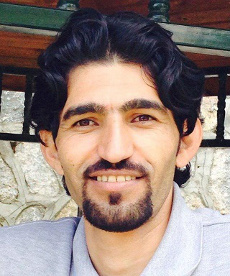Third Dervish Self-Immolates to Protest Religious Persecution in Iran
8/13/13 • Categorized as News
On July 28, 2013, Mohammad Ghanbari set himself on fire in front of the Islamic Republic of Iran’s Parliament in Tehran before he was rushed to the hospital where he died from his injuries. Mr. Ghanbari was the third Dervish[1] member of the Muslim Sufi religious group, Ahl-e Haqq (also known as Yarsan), based mainly in the Iranian Kordestan to resolve to self-immolation in protest of the Islamic Republic’s continued persecution of the Ahl-e Haqq. Two other members carried out the same act in front of the main administrative building in Hamadan in early June, with one dying from his injuries.
The Islamic Republic of Iran views non-official interpretations of Islam as threatening. Several tenets of Ahl-e Haqq, such as separation of religion and state, and rejection of religious hierarchy, contradict the Islamic Republic’s doctrine, providing a pretext for specific persecution. Over the years since the 1979 revolution, the Iranian Government has destroyed Ahl-e Haqq places of worship, performed massive crackdowns and arrests, and expelled group members from university and government positions. Recently, Iranian prison authorities forced an imprisoned member of Ahl-e Haqq, Kiumars Tamnak, to shave his mustache, which is seen as sacred to Ahl-e Haqq followers. This event precipitated the self-immolations.
States are required to protect the dignity of every individual under the Universal Declaration of Human Rights (UDHR), particularly when the state has complete control of the individual within a prison. Dignity includes freedom of religion and is protected under the International Covenant on Civil and Political Rights (ICCPR). Iran is a signatory to both the UDHR and the ICCPR.
The forced shaving of Mr. Tamnak’s mustache is considered cruel, inhuman, and degrading treatment and is in violation of international law. In 1955, the United Nations’ High Commissioner for Human Rights released the Standard of Minimum Rules for the Treatment of Prisoners, which provides in Part I, rule 6(2), “it is necessary to respect the religious beliefs and moral precepts of the group to which a prisoner belongs.” These protections exist because the abuse of an individual’s beliefs can carry great weight, as the self-immolations over the past two months demonstrate.
More recently, religious and cultural beliefs were protected by the 1984 Convention Against Torture (CAT), which strictly prohibits such techniques as cruel, inhuman, and degrading treatment. Although Iran is not a signatory to the CAT, the CAT is generally considered to be binding customary international law from its near universal acceptance and adherence. For instance, many states and organizations widely condemned the United States’ abuse of Guantanamo detainees’ religious and cultural beliefs as an interrogation method in breach of international law.[2]
The Islamic Republic of Iran has yet to respond to the three self-immolations. Mr. Ghanbari’s public suicide in response to Mr. Tamnak’s forced shaving could be seen as an act of desperation, carried out against continued oppressive policies. His unfortunate death, and the death of the other Dervish in Hamadan, could have been avoided if the Islamic Republic respected the Iranian peoples’ right to dignity and freedom of religion.
[2] Practices included desecration of the Qur’an and shaving of prisoners’ hair in the shape of a cross.
Comments are closed.







 My Interrogator Said: You Are An Ass, And Asses Do Not Merit Human Rights
My Interrogator Said: You Are An Ass, And Asses Do Not Merit Human Rights